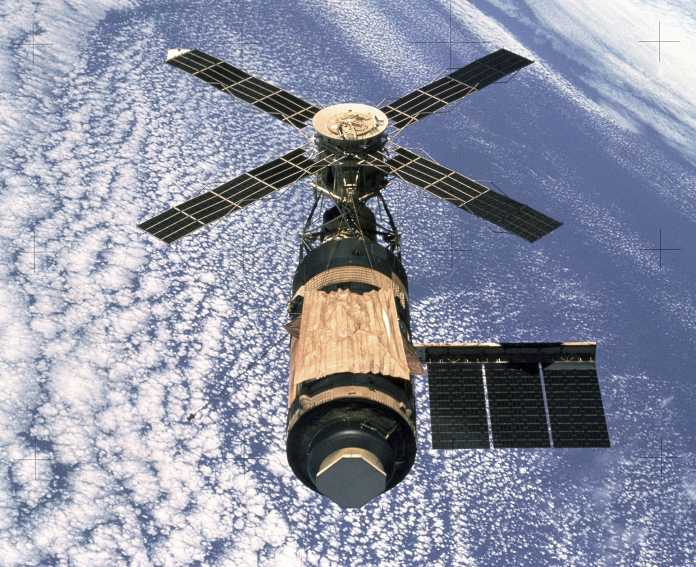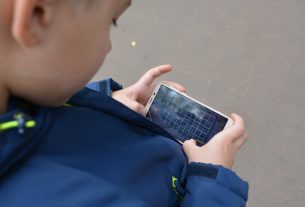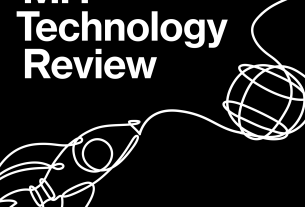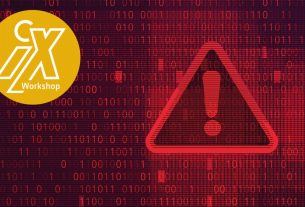The first problems came just 63 seconds after takeoff. A meteor shield deployed, ripping through the resistance, taking one solar panel with it and damaging another. This is how “Skylab”, the first American outpost in space, arrived in space on May 14, 1973 – exactly 50 years ago – from the Cape Canaveral spaceport aboard a Saturn 5 rocket, but was badly damaged.
The first crew consisted of Pete Conrad, Paul Weitz and Joseph Kerwin. The three started a few days later for “Skylab” and first had to do “huge DIY repair work” on the space station, according to US space agency Nasa, which the 50th anniversary of the launch wants to celebrate with an event in Houston, Texas.
Target, beds and two spiders
The mission, which cost about 2.6 billion dollars, actually had to be comfortable for the astronauts: the tube, about 36 meters long and almost seven meters wide, offered a shower, a small collection of books, a dartboard, machines for fitness and comfortable beds. The food – with a window overlooking the land – included cornflakes, bread, soup, vegetables, fruit, meat and even lobster.
First, however, the astronauts had to secure electrical power and insulate the station from heat and cold after NASA largely stabilized “Skylab’s” course after startup problems. After the 80-ton “Skylab” was successfully repaired, scientific work could begin. The three crews, each made up of three, carried out hundreds of experiments, spending 28, then 59 and finally 84 days aboard the “Skylab”. Astronauts have mainly worked on solar radiation, earth observation, weightlessness and biomedicine.

A view of Skylab in Earth orbit taken from Skylab 4’s Command and Service Module (CSM) during the CSM’s final orbit before returning home; recorded February 8, 1974.
(Image: NASA (Crew of Skylab 4), public domain, via Wikimedia Commons)
The astronauts also observed two spiders named ‘Arabella’ and ‘Anita’ – to find out if they too spin webs without gravity. A student from the US state of Massachusetts devised the experiment and NASA approved it. “They’ve happily monopolized some of our time,” said astronaut Owen Garriott, part of Skylab’s second crew. once during an interview. “You can’t be glued to the telescope 16 hours a day.” Spiders made webs, albeit with much finer threads than on Earth, and landed like the first spiders in space in the Guinness Book of Records.
In February 1974 the third and last crew left ‘Skylab’. In reality, the station was expected to remain in orbit for several more years, but NASA’s financial problems and unusually strong solar activity prevented this. In July 1978, the Sky Laboratory crashed in a sparsely populated area in Australia .
American response to the Russian station “Salyut”
The “Skylab” was created in the space race with the former Soviet Union. The first Soviet space station of the “Salyut” program had already been launched on Al two years earlier. The sky laboratory “Skylab” was the American answer to “Salyut” – at an altitude of 435 kilometers. Subsequently, the Soviet Union sent the space station “Mir”, before the first – and still ongoing – joint project was born in 1998: the International Space Station ISS, on which German astronauts such as Alexander Gerst and Matthias Maurer were stationed.
The construction of commercial space stations is currently being planned in many locations – and there is much discussion about the future of the ISS, not least due to tensions between Russia and the West over the war in Ukraine. After Moscow actually announced an exit for 2024, the Russian space agency Roskosmos has now confirmed further participation until 2028.
“Skylab” was one of the foundations of the ISS, says ISS scientist Julie Robinson. “We owe so much to the pioneer crews, ground teams and scientists who pioneered the trail. Skylab helped us define the problems of long-term spaceflight and the ISS is now solving them one by one.”
Recommended editorial content
With your consent, an external YouTube video (Google Ireland Limited) will be uploaded here.
Always upload YouTube videos
The Skylab crew enjoy zero gravity
(two)




